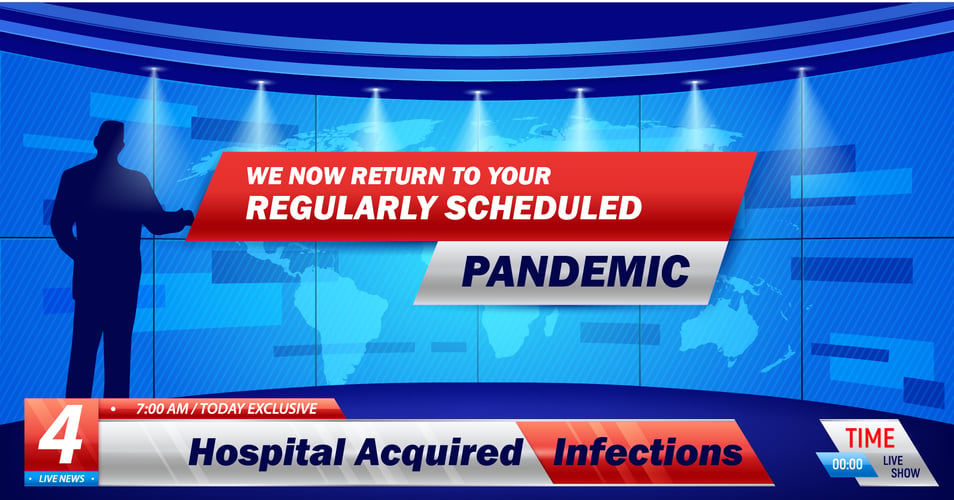The Box That Could Identify the Next Pandemic

 There is a newly released book that has risen quickly to top the best-sellers lists that is telling many unknown stories about the public health setting leading up to the COVID-19 pandemic. Aptly named, The Premonition highlights key figures in the research and policy that set the stage for our global and national response. Through these personal stories, author Michael Lewis gives readers insights into the many early warnings - the premonitions - that a major viral outbreak was about to change our lives for a long time. One such story highlights a tool that will invariably help us detect the next outbreak. In today's post, we'll learn about that technology and the steps being taken to make bioinformatics an early warning system.
There is a newly released book that has risen quickly to top the best-sellers lists that is telling many unknown stories about the public health setting leading up to the COVID-19 pandemic. Aptly named, The Premonition highlights key figures in the research and policy that set the stage for our global and national response. Through these personal stories, author Michael Lewis gives readers insights into the many early warnings - the premonitions - that a major viral outbreak was about to change our lives for a long time. One such story highlights a tool that will invariably help us detect the next outbreak. In today's post, we'll learn about that technology and the steps being taken to make bioinformatics an early warning system.
The story of the box that could identify the next pandemic starts, in many ways, in the year 2000, when researcher Joe DeRisi and his colleague David Wang reasoned that DNA microarrays could also be used for identifying and discovering viruses. They created ViroChip, a small glass slide that carries >22,000 tiny fragments, or sequences, of every virus ever discovered. When exposed to samples taken from patients, the fragments on the slide attach to those from the sample and reveal which viruses are present. That's the identification part. If the patient sample activates odd combinations of viruses, or incomplete fragments, then the result could be the discovery of a new, or novel, virus. The ViroChip played a key role in identifying SARS-CoV-1, known as SARS, back in 2003. It was also used to confirm the identify of its more lethal cousin, SARS-CoV-2, the virus that causes COVID-19. All that was needed to get an early warning of more novel viruses was tons and tons and tons of samples. Dr. DeRisi and his team did not patent the technology, so it was available to anyone who wanted, or rather could access, that level of biological and computational infrastructure.
The story continues in 2016, when the Chan Zuckerberg Initiative funded BioHub, an independent, non-profit research center, with Dr. DeRisi at the helm. Co-President DeRisi, not only a biologist but also a self-proclaimed "computer nerd," realized that the next step to making ViroChip give us the information researchers needed to anticipate possible new pathogens was more data. Getting more samples - and by more, we mean millions - would reveal patterns, expose early emergence of new pathogens, and give us needed time to sequence the entire virus and prepare for a possible outbreak, including treatments and even vaccines. How would they get the millions of ongoing samples analyzed in close to real-time from all over the world, even countries with less technological infrastructure? The analysis of the data from the ViroChip requires massive computational power, requiring everything from expensive equipment to a reliable electrical grid, two things that developing countries do not have.
Enter IDSeq, the box (and cloud) that can predict the world's next pandemic. IDSeq is a free, open, and accessible cloud-based dashboard that allows researchers to upload their ViroChip data and get back the analysis through a process called metagenomic sequencing. Their data joins the growing database of samples required for global viral surveillance, and they get back a powerful analytical tool they could otherwise never access. All they need to have is a basic genomic sequencing lab (which has become far more affordable and accessible in just the past five years) and an internet connection (even a spotty one).
How important is having a "real-time pathogen detection" tool? It's the difference between finding patient zero (or even patient 15) instead of patient 100 or 1,000. It means discovering the real cause behind an outbreak of flu-like symptoms in one area is the same as the cause of an outbreak 100 miles away, and realizing there is a connection. It means detecting, monitoring, and reviewing outbreaks as they happen to better understand transmission speed and geographic spread. Finally, it means deciphering new viruses (or organisms, since it's not restricted to viruses) and sequencing them so that treatments and vaccines can get a head start if an outbreak occurs.
It is exciting and also encouraging to know that such an accessible tool is available to the globe to better prepare for the next pandemic. While the COVID-19 pandemic still continues, it's worth noting that Dr. DeRisi and his colleagues are not always heeded. When SARS-CoV-2 first began to be detected in the US, they did not think the federal response was fast enough, so they converted their lab into a diagnostic lab in 8 days so that they could begin processing COVID tests. It takes this kind of trained intuition to inform our nation of how to prepare - if we listen.
![EOScu Logo - Dark - Outlined [07182023]-01](https://blog.eoscu.com/hubfs/Eoscu_June2024/Images/EOScu%20Logo%20-%20Dark%20-%20Outlined%20%5B07182023%5D-01.svg)




